What is Promotion Marketing? Definition, Tips, and Examples
There is no marketing without promotion. After all, it is one of the four Ps of the marketing mix – price, product, place, and promotion. Promotion marketing helps communicate the value of a product or service to the audience. What for? Well, to increase brand awareness, peak interest, and generate sales, just for starters. But, let us start from the beginning.
What is the difference: between marketing and promotion?
Marketing wouldn’t be fully effective without promotions, however, they both serve different purposes. In short, marketing focuses on increasing the awareness of a product and getting it in front of potential customers. Promotions are the final step of marketing – they provide the needed incentive to turn visitors into buyers. All in all, marketing vs promotion is about awareness vs conversion.
What is the marketing mix?
The marketing mix was coined by Neil Borden in 1964 and is defined as a set of marketing tools that can ensure product or service success in a competitive market. These include product, price, place, and promotion. The marketing mix later on expanded to include additional three Ps – packaging, positioning, and people. It's also worth mentioning the other piece of marketing strategy: advertising. Advertising vs promotion is a different story and requires a separate article to cover it.
What is promotion marketing?
Let's start with promotion marketing meaning, or promotional marketing, which is a form of marketing communication that seeks to inform customers about the company's activities, its current and future offers, shape a positive brand image, build positive relationships, and stimulate demand, in accordance with the individual business strategy. Promotions are used across all industries in plenty of different contexts – they can help achieve all key business objectives, such as acquiring new customers, preventing churn, and building customer loyalty. In short, promotion marketing helps to present your product, stimulate demand for it, and build an appropriate differentiation strategy.
The easiest way to understand promotion marketing is to imagine it as a conversation between a seller and a buyer – the seller tries to convince the buyer to purchase a product or a service through the use of promotions. What these promotions might be? Usually, promotions denote incentives, special offers, and rewards. In Voucherify, we understand promotional campaigns as the use of six promotion tools – coupons, cart discounts, referral and loyalty programs, gift cards, and giveaways.
Types of promotional marketing
In marketing, we can differentiate more than six promotion types:

- Personal selling – one-on-one communication with customers. Expensive in terms of time and resources, but tends to be the most profitable out of all promotion types.
- Advertising – targeted messages that boost brand awareness among current and new customers.
- Direct marketing – unlike advertising, direct marketing reaches out to customers who are already familiar with your product or service primarily through social media, email, and SMS.
- Public relations – used to build a constructive brand image.
- Lobbying – used to influence public opinion.
- Merchandising – influencing the customer's behavior through the appropriate presentation of the store and the offered products in order to increase sales.
- Sales promotions – used to stimulate demand through various incentives, such as discounts, cashback, free shipping, gifts, and more.
What are the main sales promotion types?
There are also two different promotional methods that you can use – price promotions and non-price promotions. The definition of promotional pricing refers to price promotions, unsurprisingly, focusing on lowering prices in the hope of increasing sales. You can think here of discount vouchers or BOGO promotions.
On the other hand, non-price promotions focus on the additional value created by the promotion, not the price itself. Examples of non-price promotions include sampling, contests, or free gifts. Depending on your line of business, different promotions will resonate better with your audience. However, the consensus is that non-price promotions tend to be more effective and creative. From the business point of view, they are also cheaper – the results you can achieve are much higher than the promotional costs incurred.
What are the benefits of promotion marketing?
Promotion marketing can serve plenty of goals. Here are some of the most noteworthy benefits that businesses get from a well-thought-out promotional marketing strategy:
1. Offer a unique selling proposition
A unique selling proposition (USP) is nothing else than a way to identify what makes your company different from competitors. Strong USP gives customers a reason to choose your offer over your competitors. Analyze the strengths and weaknesses of your brand to come up with a convincing USP. Make sure to make it unique to your brand and clearly visible at a glance. Once you have a USP nailed down, you can start building your promotional marketing campaign around it. Your promotional marketing can on its own be a unique selling proposition if your competition doesn’t run any interesting sales promotions.
2. Improve brand perception
With a smart promotional marketing strategy and traditional advertising, you can build an interesting brand narrative and position your business in a variety of spaces. For instance, if your customers are interested in the subjects of sustainability and ecology, you can run charity promotions where you give a part of every purchase to charitable causes. Promotion marketing can help you craft the lenses through which customers will perceive your brand.
3. Turn visitors into long-term customers
The primary goal of any sales promotion is increasing company revenue while staying within the allocated budget. Marketers have a wide selection of promo offers to attract and convert shoppers, ranging from open-for-all promo codes to fun giveaways and social media contests.
How to plan a promotional campaign?
Imagine that you are a shop owner who wants to up his/her marketing game a little. What do you do? Well, this guide is a good starting point for becoming a promotion marketing pro.
1. Define the product
The first thing to do is to identify the product of the promotion. Taking into account the costs and margins, you should choose products which potential revenues will cover promotion expenses. In addition, it is important to identify similar products to the ones you’d like to promote. Advertising and promotional activities around the product that substitute has a high margin may lead to so-called cannibalism, which results in a lower margin than pre-promotion. Also, keep in mind that not all promotions need to be product-based. If that’s true for you, skip this step altogether.
2. Understand the needs of your audience
When choosing a product for promotion, you should also define the target group of your campaign. It is helpful in communicating with consumers because by knowing their preferences and inclinations, you will be able to adjust the offer better. A promotion addressed to a specific group of people often brings greater profits than if it was addressed to everyone.
3. Set the promotional campaign goals
By defining a goal(s), you can effectively choose an action tool. You can use sales promotions to achieve multiple marketing and sales goals. Here are some of them:
- Increase in off-season sales.
- Stimulation of product demand.
- Increase in customer loyalty and brand awareness.
- Smooth introduction of a new product.
- Creation of competitive advantage.
- Better information flows about new products and services.
It is worth mentioning at this point that most experts on the subject emphasize that promotions generally do not build brand loyalty, because they mainly attract price-driven customers. A loyal buyer of a given brand does not change preferences in a response to competitors’ promotional offers. From this point of view, promotional actions will bring an increase in sales in the short term, but will not result in a constant increase in market share.
4. Choose the right marketing channels
Communication with consumers depends on who you want to reach, the nature of the target group, and the product promoted. Additionally, the scope and intensity of the campaign (i.e. the frequency of broadcasting, the number of viewers, listeners, etc.) must be taken into account, as well as its impact on a specific recipient. After all, there is no point in promoting women’s shoes in an exclusive men's magazine or a luxury car in a youth magazine. Some products will be better promoted by digital advertising and some with a traditional one.
5. Set the promotion budget
At some point, you need to start talking about money. Analyze how much money you can spend on a promotional campaign. Take into account your current marketing budget, predicted ROI, taxes, vital expenses, and product development. Try to find ready promotional solutions that can minimize development and maintenance costs. Remember that the budget should be adjusted to the size of the market, product specificity, competitors' activities, and the target group.

10+ promotional campaign ideas with real-life examples
There are so many brands competing for a limited amount of dollars. Conclusions? You need to stand out from the crowd of the same offers. How? Promotion marketing can be the answer you’ve been looking for.
We’ve collected more than 10 examples of promotional campaigns used by both small businesses and huge enterprises. For more examples of sales promotions, check out this article. Need more? We also created a library of over 100 promotional campaigns.
1. Free shipping promotions
Free shipping is one of the most popular (and profitable) promotional tactics for online retailers. By offering free shipping, you might get your customers to pay more than both of you expect. Keep in mind to use free shipping in conjunction with a minimum purchase requirement to increase your average order value. Also, go hard or go home – make customers hear about your free shipping campaign by including it in your direct communication channels.
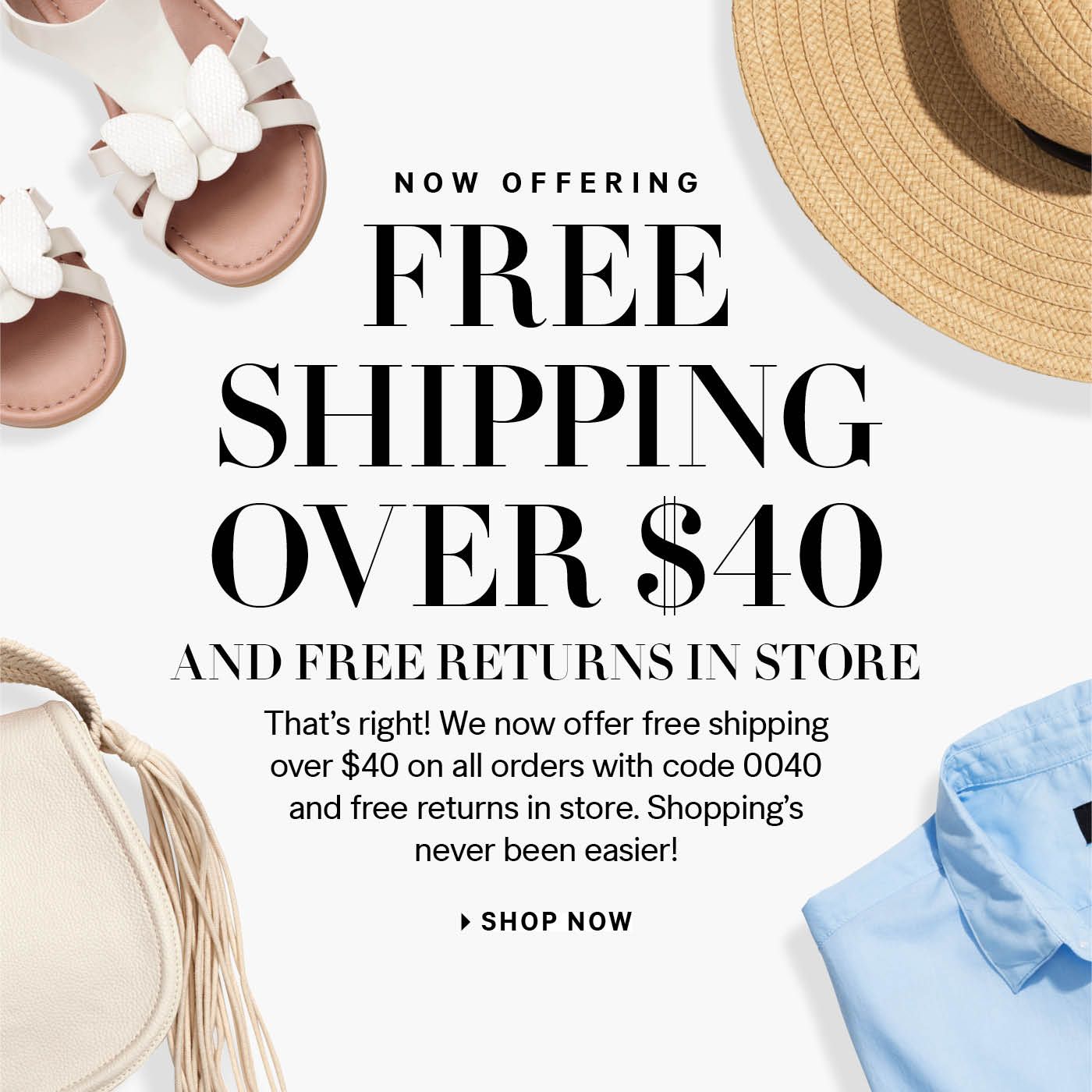
2. Discount for new customers (tripwire promotions)
Discount coupons are a terrific way to increase your conversion rates and make your offer stand out among competitors. For instance, you may offer an amount or percentage discount on the next purchase and deliver it to newly-registered customers via email. Usually, businesses tend to offer very attractive discounts for first-time shoppers to convert them. These are called tripwire promotions.

3. Cart abandonment promotions
Abandoned carts are one of the biggest challenges of online sales. This is confirmed by statistics – according to research by the Baymard Institute, as much as 69% of online shoppers end up abandoning the basket. Promotions are the perfect way to nudge customers along the sales funnel and incentivize them to finish their shopping. For more examples and ideas for cart abandonment promotions, go here.

4. Referral program and word-of-mouth marketing
Referral programs let you reward customers for spreading the word about your business. It is a fantastic way to lower customer acquisition costs, nourish customer advocacy and identify potential brand ambassadors which you can later pamper with other VIP-only incentives. Double-sided referral programs so when both parties get rewarded tend to work best – it may seem that providing incentives for both parties is a financial mistake, however, it’s all about finding balance. It doesn’t take much more resources to cut a little discount for the referrers or the referees.

{{EBOOK}}
{{ENDEBOOK}}
5. BOGO & product bundling promotional campaigns
A free product is a great way to provide additional value to customers. If used strategically, it can also increase average order size and help you get rid of products that do not sell well on their own. Remember to create product bundles that make sense to customers – mix complementary products to increase the attractiveness of the offer. The most popular type of bundling are BOGO promotions, where customers get the same or a similar product for free if they purchase the required number of products.
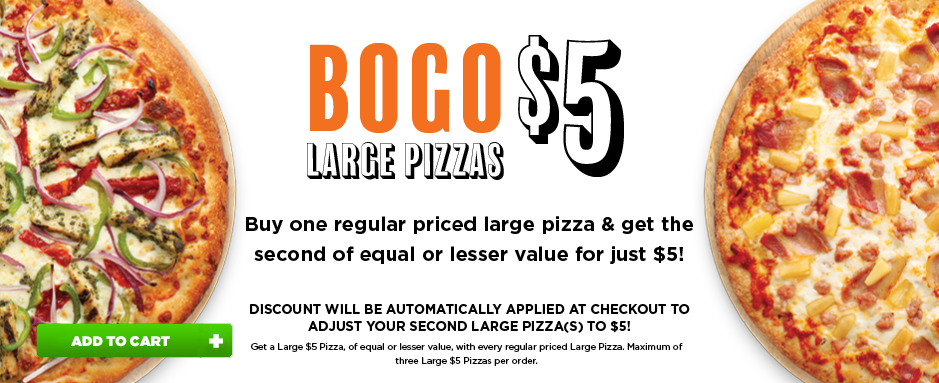
6. Happy hour campaigns & flash sales
To keep the revenue flowing and to protect your margins against sudden drops in quiet periods, you can try offering a percentage or amount off discounts for selected products or services. But with a twist. To increase offer urgency and turn off-peak hours into peak time again, run happy hour promotions or flash sales. Marketing experts are in consensus that promotions are much more attractive when limited in time.

7. Customer service discounts
You can trigger automatic discounts for all customers who raised a support ticket. This way, you instantaneously remedy any ill feelings or indignation on the customers’ side and increase the chances that the ticket will be resolved successfully and amicably. You can also use sorry discounts if your brand was faced with bigger technical challenges that affected a big chunk of shoppers.
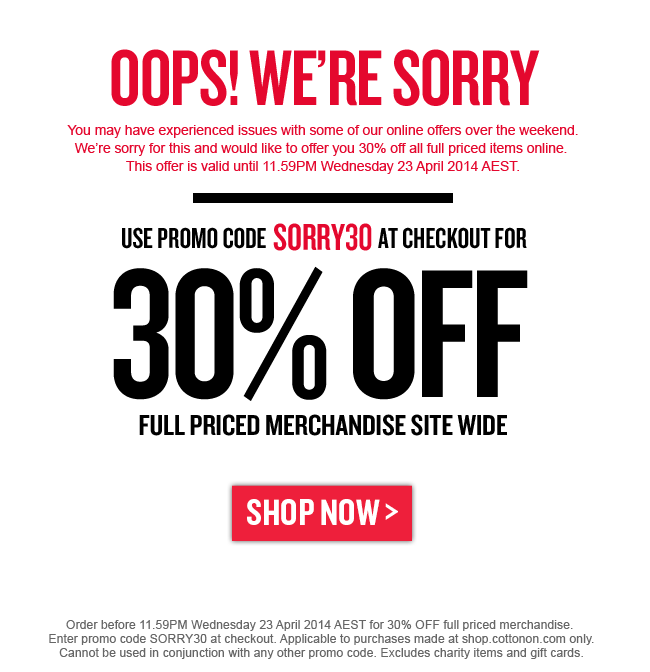
8. Re-engagement (win-back)campaigns
Sometimes you may need to incentivize dormant customers, and there is no better way to do it than with a fun re-engagement campaign. If your customers didn’t use your app or haven't made an order in quite some time, send them a promo code for a new product line to give them an extra push. You can also use this kind of promotion with shoppers you haven't converted yet. Go here for more re-engagement campaigns ideas.

9. Loyalty programs
All great loyalty programs consider the individual customers’ needs, interests, and preferences to win customers’ hearts, trust, and, ultimately, wallets. Try to follow an original formula for a loyalty program with multiple tiers, product-based and non-monetary rewards, individual customer dashboards, and optionally a mobile loyalty app. New to customer loyalty? Learn more in our Loyalty Guide.

10. Seasonal promotions
A seasonal promotion is any type of promotional activity (e.g., special offers, discounts, limited edition items) inspired by holidays, celebrations, and seasons. To take advantage of specific occasions, you may launch a special gift card or discount campaign. Seasonal promotions tend to be very effective as customers have come to expect special deals during holidays and celebrations and are less likely to get annoyed with a promotional offer.
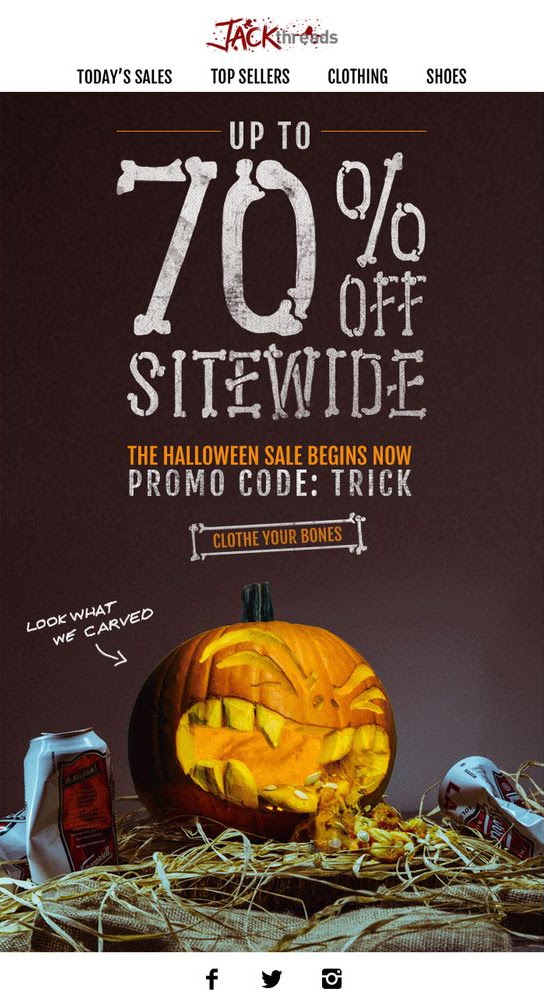
11. Gated promotions
To increase the personalization of your offers, you can target promotions at members of a particular group based on occupation, affiliation, and more. For instance, you can target your promotion marketing campaigns at college students or veterans. All interested customers need to undergo a verification process to gain access to the offer, giving your promotion an aura of exclusivity.
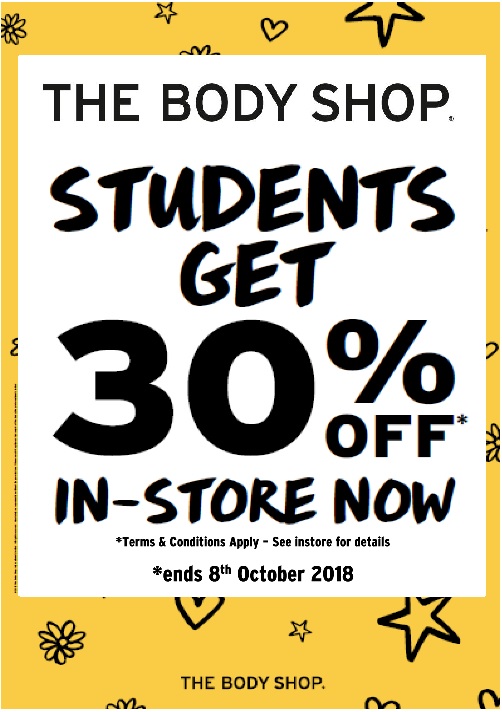
Latest trends in promotion marketing
The latest digital marketing trends open an amazing opportunity to improve your promotion marketing even further. The key promotion trends that are on each marketer’s mind right now is personalization and targeting. One-size-fits-all offers don't appeal to modern customers who most often are digital natives who skilfully move around digital environments. Another trend, closely connected to personalization, is location marketing. Customers’ geolocation is a fantastic fabric for weaving promotions – it’s relevant, attractive, and hits home (quite literally).
The two remaining trends worth considering is the use of social media as a promotion channel and allowing for mobile experiences. Both mediums are growing at a neck-breaking pace. Customers are already using social media and mobile devices to perform any action imaginable – don’t ask them to switch the medium for you, instead, meet them there instead.
{{CTA}}
Up your promotion marketing game with Voucherify
{{ENDCTA}}









.jpeg)


.jpeg)